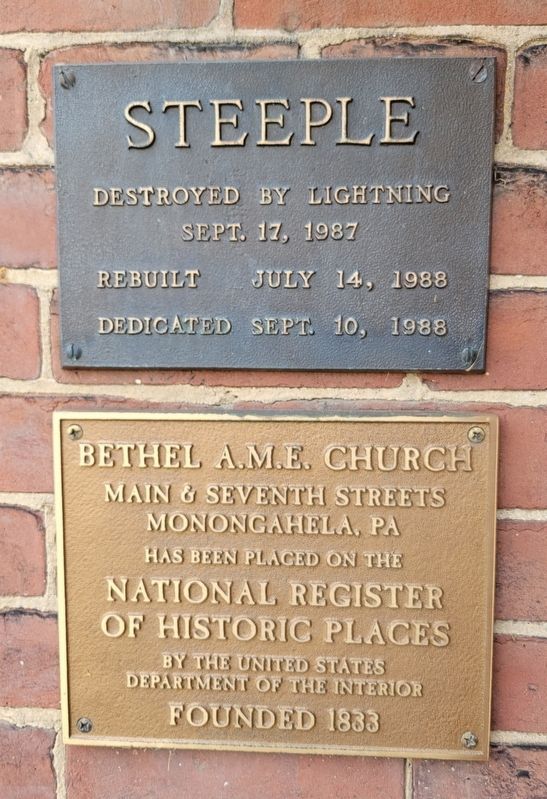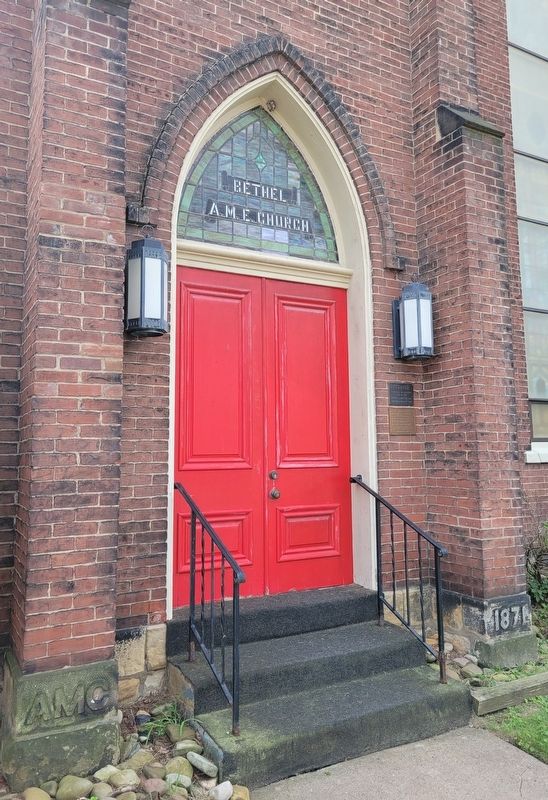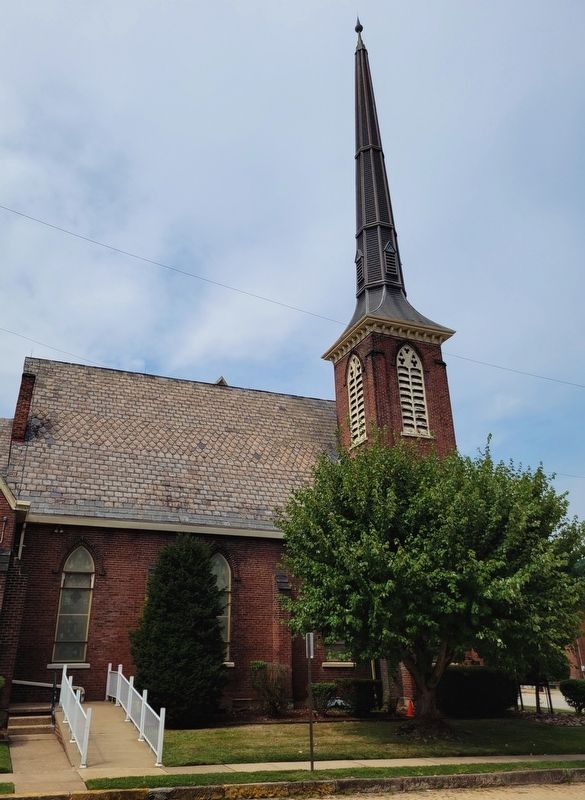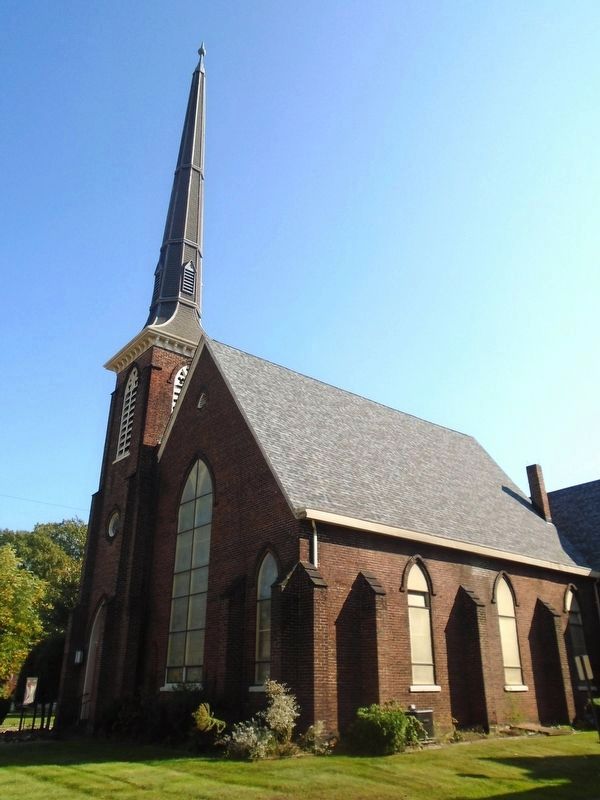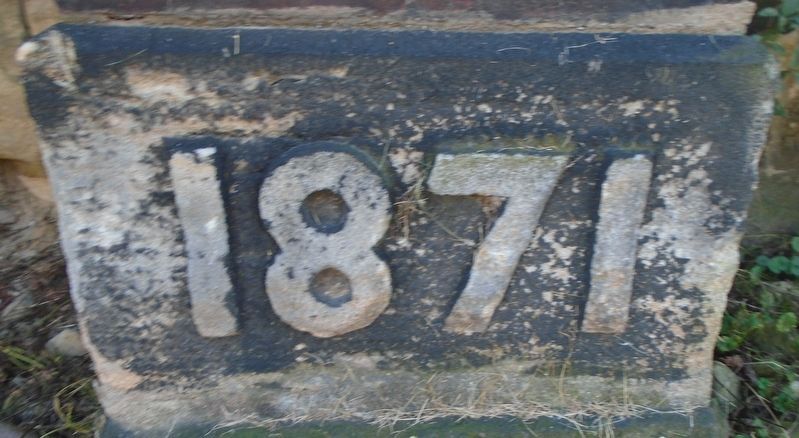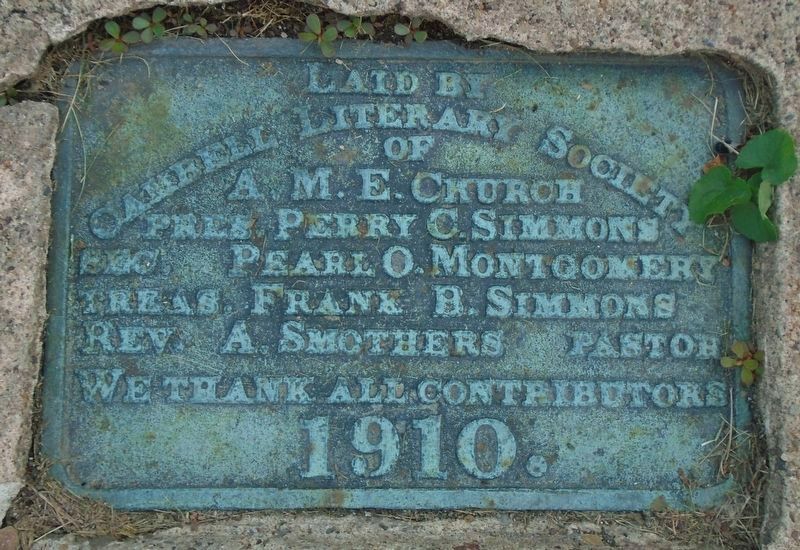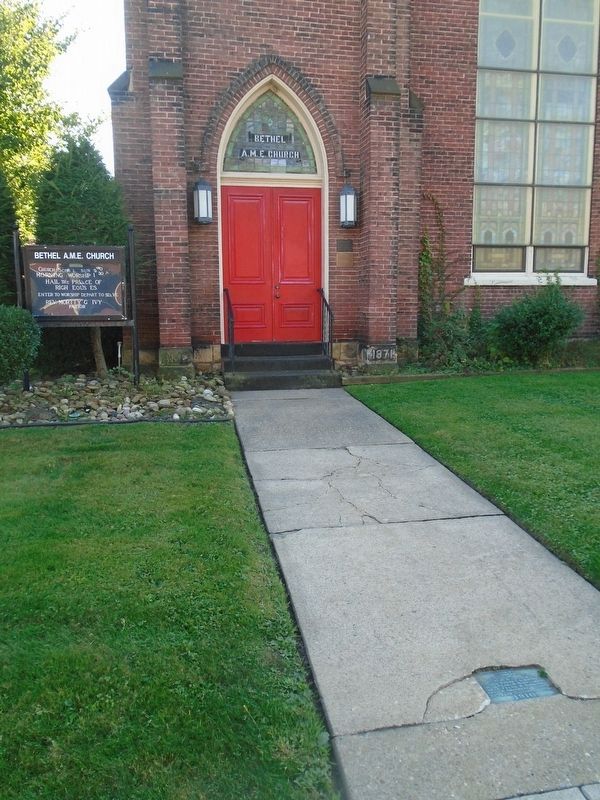Monongahela in Washington County, Pennsylvania — The American Northeast (Mid-Atlantic)
Bethel A.M.E. Church
Monongahela, Pa
has been placed on the
National Register
of Historic Places
by the United States
Department of the Interior
Founded 1833
Steeple
Destroyed by lightning
Sept. 17, 1987
Rebuilt July 14, 1988
Dedicated Sept. 10, 1988
Topics and series. This historical marker is listed in this topic list: Churches & Religion. In addition, it is included in the National Register of Historic Places series list. A significant historical year for this entry is 1833.
Location. 40° 12.308′ N, 79° 55.911′ W. Marker is in Monongahela, Pennsylvania, in Washington County. Marker is at the intersection of Main Street (Pennsylvania Route 837) and 7th Street, on the left when traveling west on Main Street. Touch for map. Marker is at or near this postal address: 700 West Main Street, Monongahela PA 15063, United States of America. Touch for directions.
Other nearby markers. At least 8 other markers are within walking distance of this marker. Veterans Memorial (within shouting distance of this marker); Jackie Ormes (within shouting distance of this marker); John Pietroboni (within shouting distance of this marker); Monongahela (within shouting distance of this marker); a different marker also named Veterans Memorial (about 300 feet away, measured in a direct line); Company A, 110th Infantry Honor Roll (about 300 feet away); Veterans Honor Roll Memorial (about 300 feet away); Company A, 110th Infantry Regiment Memorial (about 300 feet away). Touch for a list and map of all markers in Monongahela.
Regarding Bethel A.M.E. Church. Excerpt from the National Register Significance Statement:
The Bethel African Methodist Episcopal Church building is significant under Criterion C for Architecture, as an outstanding, though modestly-sized example of Gothic Revival style design. Additionally, the building is significant under Criterion C for Architecture, as the work of prominent local architect/builder John Blythe, one of about a dozen locally-important brick buildings Blythe had under constraction in 1869-1872. The church is the only local example of a building of relatively sophisticated design built by an African American congregation, on a conspicuous site, in the nineteenth century, and as such, it is all the more unusual for having been built shortly after the Civil War. It is also significant under Criterion A for Ethnic Heritage as the center of social interaction among the area's African American ethnic community since the 1870s. The church is also a locally unusual example of a building of relatively sophisticated design built by an African American congregation It is the oldest community focal point for the African American families in Monongahela City and surrounding areas. Home to one of the oldest AME congregations in southwestern Pennsylvania, this building has served an educational and social function for over a hundred and thirty years. The Period of Significance begins in 1871 with the erection of the brick exterior of the building according to John Blythe's plans, and concludes to 1952, through which time the church served as an important center for Monongahela's African American community. The property meets Criteria Consideration A for being owned by a religious organization because its significance lies in secular areas of history and architectural significance.
The Bethel AME Church building was constructed at the culmination of about a century of African American presence in the Monongahela City area, a century in which Black citizens rose from their earliest station in the community, mostiy as slaves, to free and active citizens and owners of a conspicuous and prominent church building. The Bethel AME building is the oldest built landmark of this African American enclave. Monongahela City straddles the original line between Nottingham and Fallowfield Townships, both townships where there were substantial populations of slaves prior to the Gradual Abolition Act of 1780-82. In 1782, 26 Fallowfield Township residents held 107 slaves (the largest number of any township in the county), and nine Nottingham Township residents held 28 slaves. Though the presence of African Americans in the Monongahela area's population can be traced back to slaves brought here in the late eighteenth century, it is not known for certain if any of the founders of the Bethel AME congregation were persons who had been held in captivity in this vicinity. However, the same parts of Washington County where there [were] larger numbers of slaves in the county in the 1780s are the areas where the larger Free Black settlements were located in 1830. Many of the area's oldest African American families came here as Free Blacks or as escaping slaves from the south in the first half of the nineteenth century. As slavery was gradually abolished, the town became home to a community of Free Blacks, some of whom moved here from other towns connected to Monongahela City by early highways and/or the Monongahela River. By 1830, the greatest number of Free Blacks in Washington County (92) was in Pike Run Township, which had been formed after 1782 from the southern half of Fallowfield Township, while the northern half of the old township (part of which is now in the Monongahela City limits) contained the second highest African American population at 74. In 1833, a half century after African Americans were first mentioned as slaves in local records, the Free Black citizens of Monongahela City formed the Bethel AME congregation. It is believed that nearly all African Americans living in the town prior to the 1880s were affiliated in some way with this congregation. It was the first permanent African American institution established in the eastern half of Washington County. In an 1859 directory of the city, about 20 African American families are listed among about 300 listings. The city's African American population has remained between 5% and 10% of the total population since then.
Also see . . . Bethel African American Episcopal Church of Monongahela City. (Submitted on October 17, 2023, by William Fischer, Jr. of Scranton, Pennsylvania.)
Credits. This page was last revised on October 17, 2023. It was originally submitted on September 9, 2022, by Bradley Owen of Morgantown, West Virginia. This page has been viewed 98 times since then and 26 times this year. Photos: 1, 2, 3. submitted on September 9, 2022, by Bradley Owen of Morgantown, West Virginia. 4, 5, 6, 7. submitted on October 17, 2023, by William Fischer, Jr. of Scranton, Pennsylvania. • Bill Pfingsten was the editor who published this page.
